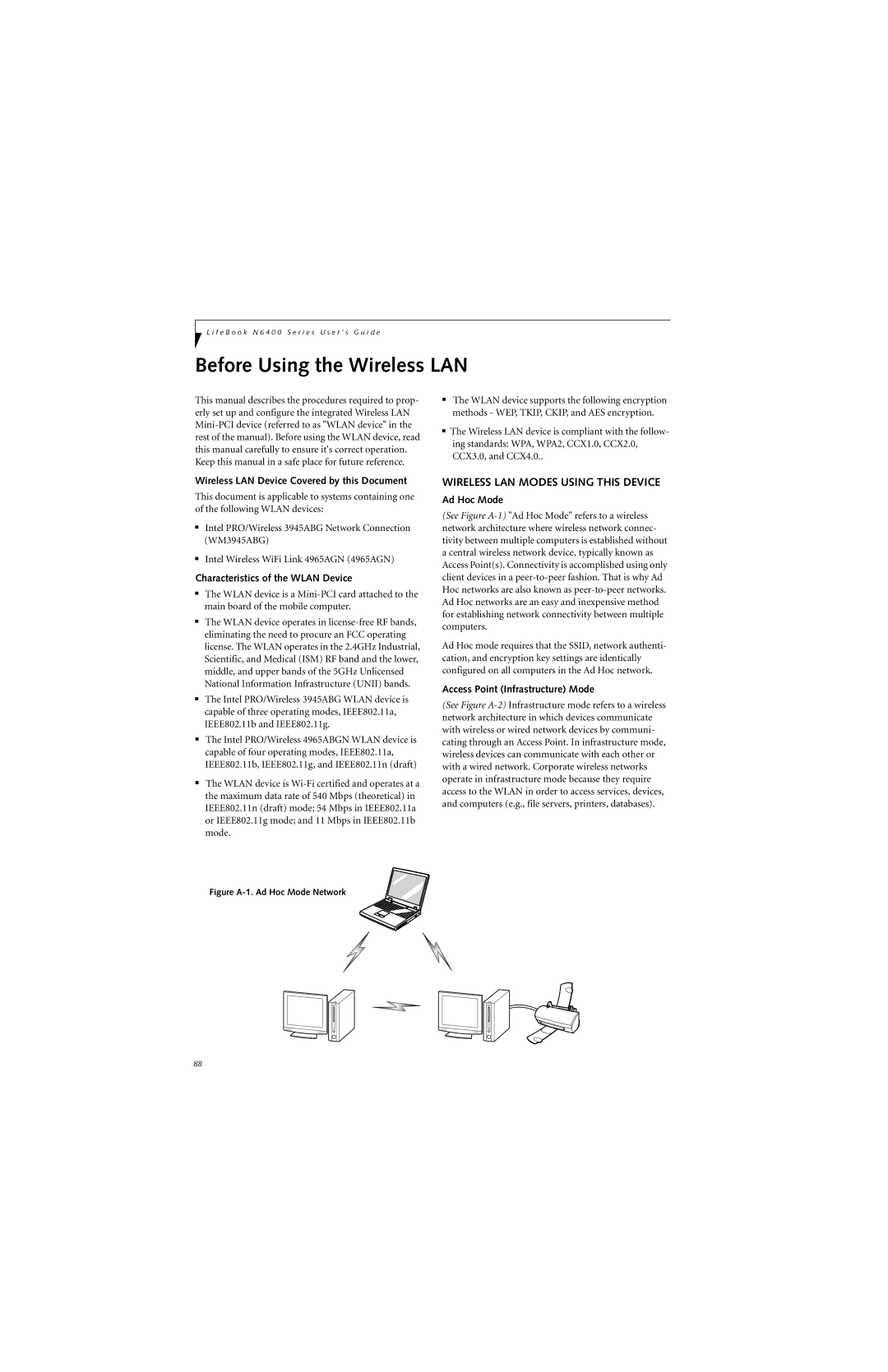
L i f e B o o k N 6 4 0 0 S e r i e s U s e r ’ s G u i d e
Before Using the Wireless LAN
This manual describes the procedures required to prop- erly set up and configure the integrated Wireless LAN
Wireless LAN Device Covered by this Document
This document is applicable to systems containing one of the following WLAN devices:
■Intel PRO/Wireless 3945ABG Network Connection (WM3945ABG)
■Intel Wireless WiFi Link 4965AGN (4965AGN)
Characteristics of the WLAN Device
■The WLAN device is a
■The WLAN device operates in
■The Intel PRO/Wireless 3945ABG WLAN device is capable of three operating modes, IEEE802.11a, IEEE802.11b and IEEE802.11g.
■The Intel PRO/Wireless 4965ABGN WLAN device is capable of four operating modes, IEEE802.11a, IEEE802.11b, IEEE802.11g, and IEEE802.11n (draft)
■The WLAN device is
■The WLAN device supports the following encryption methods - WEP, TKIP, CKIP, and AES encryption.
■The Wireless LAN device is compliant with the follow- ing standards: WPA, WPA2, CCX1.0, CCX2.0, CCX3.0, and CCX4.0..
WIRELESS LAN MODES USING THIS DEVICE
Ad Hoc Mode
(See Figure
Ad Hoc mode requires that the SSID, network authenti- cation, and encryption key settings are identically configured on all computers in the Ad Hoc network.
Access Point (Infrastructure) Mode
(See Figure
Figure A-1. Ad Hoc Mode Network
88
